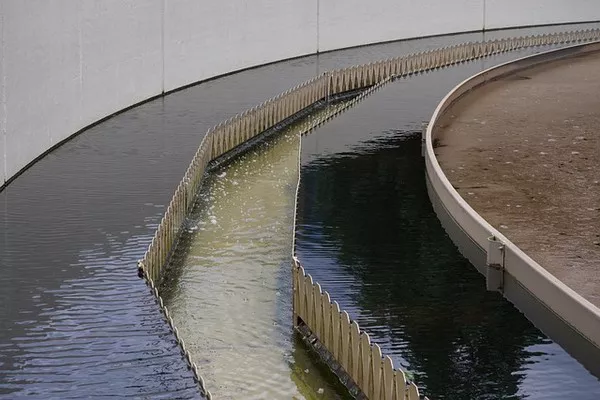Wastewater management is a critical aspect of environmental stewardship and public health. Every day, vast amounts of wastewater are generated from various sources such as households, industries, and agriculture. Understanding what happens to wastewater after it is discharged is essential for ensuring effective treatment and minimizing its adverse impacts on the environment. This article delves into the journey of wastewater, exploring the processes it undergoes, its environmental impacts, and sustainable solutions for wastewater management.
The Journey of Wastewater
Collection:
The journey of wastewater begins with collection from various sources. In urban areas, sewage systems collect wastewater from households, commercial establishments, and institutions through a network of pipes. In rural areas, decentralized systems such as septic tanks or onsite treatment systems may be used. Industrial wastewater is often collected separately and treated in specialized facilities to remove contaminants specific to industrial processes.
Treatment:
Once collected, wastewater undergoes treatment to remove contaminants and pollutants before it is discharged back into the environment. Wastewater treatment typically involves several stages:
a. Preliminary Treatment: In this stage, large debris such as plastics, rags, and other solids are removed through physical processes such as screening and sedimentation.
b. Primary Treatment: During primary treatment, suspended solids are further removed through sedimentation. This process helps in reducing the organic load and improves the efficiency of subsequent treatment processes.
c. Secondary Treatment: Secondary treatment involves biological processes where microorganisms break down organic matter present in wastewater. Common methods include activated sludge process, trickling filters, and constructed wetlands. These processes facilitate the decomposition of organic compounds, reducing biochemical oxygen demand (BOD) and pathogens in the wastewater.
d. Tertiary Treatment: Tertiary treatment aims to further enhance the quality of treated wastewater by removing nutrients (such as nitrogen and phosphorus), pathogens, and trace contaminants. Advanced treatment methods like filtration, chemical precipitation, and disinfection (e.g., chlorination or UV irradiation) are employed in this stage.
Discharge or Reuse:
After undergoing treatment, the treated wastewater is either discharged into surface water bodies like rivers, lakes, or oceans, or reused for various purposes such as irrigation, industrial processes, or groundwater recharge. Reuse of treated wastewater, also known as water recycling or water reclamation, has gained prominence as a sustainable solution to address water scarcity issues in many regions.
Environmental Impacts of Wastewater
While wastewater treatment aims to mitigate its environmental impacts, untreated or inadequately treated wastewater can have significant adverse effects on ecosystems and human health:
Water Pollution: Untreated wastewater contains a variety of pollutants, including nutrients (such as nitrogen and phosphorus), pathogens, heavy metals, and organic compounds. Discharging such wastewater into water bodies can lead to contamination of surface and groundwater, affecting aquatic life and compromising water quality for drinking, recreation, and agriculture.
Eutrophication: Excessive discharge of nutrients from wastewater, particularly nitrogen and phosphorus, can cause eutrophication—a process wherein algal blooms proliferate, leading to oxygen depletion in water bodies. This disrupts aquatic ecosystems, harms fish and other aquatic organisms, and may result in the formation of dead zones where no life can thrive.
Health Risks: Pathogens present in untreated wastewater pose a significant risk to public health, as they can spread waterborne diseases such as cholera, typhoid, and gastroenteritis. Contaminated water sources can lead to outbreaks of infectious diseases, especially in communities with poor sanitation and limited access to clean water.
Habitat Destruction: Wastewater discharge can alter the physical and chemical characteristics of aquatic habitats, affecting biodiversity and ecosystem functioning. Toxic pollutants and changes in water temperature, pH, and dissolved oxygen levels can disrupt habitats, leading to the decline or extinction of native species.
Sustainable Solutions for Wastewater Management
To address the challenges associated with wastewater management and minimize its environmental impacts, various sustainable solutions can be implemented:
Improved Infrastructure: Investing in modern sewage systems and wastewater treatment plants with advanced technologies can enhance the efficiency of wastewater collection and treatment. Upgrading aging infrastructure and expanding coverage to underserved areas can help reduce the discharge of untreated wastewater into the environment.
Water Reuse and Recycling: Promoting the reuse of treated wastewater for non-potable applications such as irrigation, industrial processes, and toilet flushing can reduce the demand for freshwater resources and minimize the discharge of pollutants into water bodies. Implementing decentralized water recycling systems at the community or household level can further enhance water security and resilience.
Nature-Based Solutions: Incorporating nature-based approaches such as constructed wetlands, green infrastructure, and riparian buffers into wastewater treatment and management can provide cost-effective and sustainable alternatives to conventional treatment methods. These approaches harness natural processes to remove contaminants, enhance water quality, and restore degraded ecosystems.
Public Awareness and Education: Raising awareness about the importance of proper wastewater management, water conservation, and pollution prevention through education campaigns, outreach programs, and community engagement initiatives can foster behavioral changes and promote responsible water stewardship at the individual and collective levels.
Policy and Regulation: Enforcing stringent environmental regulations and standards for wastewater discharge, effluent quality, and water reuse can incentivize industries, municipalities, and other stakeholders to adopt cleaner production practices and invest in pollution prevention and control measures. Integrating economic instruments such as pollution taxes, subsidies, and trading schemes can also encourage sustainable wastewater management practices.
SEE ALSO What Is The Process Of Wastewater Treatment Is Commonly Known
Conclusion
The journey of wastewater from its source to its ultimate fate in the environment encompasses various processes, impacts, and challenges. By understanding these dynamics and adopting sustainable solutions for wastewater management, we can safeguard water resources, protect ecosystems, and ensure the health and well-being of present and future generations. Through collective efforts and innovative approaches, we can turn wastewater from a problem into a valuable resource for sustainable development and environmental resilience.

